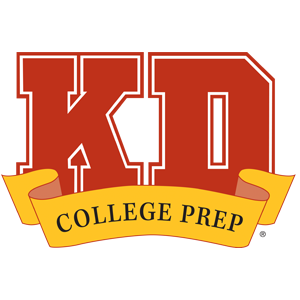Think of a practice test as a scrimmage before the big game – you can see what the test will entail without all of the pressure and then make adjustments based on how you perform.
In fact, taking practice tests is considered to be one of the most effective study techniques. So if you really want to improve your test score or make an impact in your first round of testing, practice tests are a great place to start.
How to Use Practice Tests to Maximize Your Test Scores
Practice tests are one of the best ways to increase your scores on admissions tests, but only if you use them wisely. Follow these tips to get the most out of this method of preparing for admissions tests.
1. Don’t take the practice test while sitting on the couch
Ideally, you will want to take a practice test in an environment similar to the one in which you will take the official test.
Psychological research shows that your study environment has a direct impact on how you will perform. If you take a practice test while sitting on the couch with TV or music in the background, you are not really replicating the quiet classroom where the official PSAT, SAT®, or ACT® tests will take place.
You are also more likely to get distracted and send a quick text message, stop for a dinner break, or even stop before finishing the entire test. Try to mimic the real test by practicing at a testing center or in a quiet room where you can give the test your full attention.
2. Time yourself properly
Set aside time to take the test in its entirety. College admissions tests are timed, so your brain will need to be trained to answer questions efficiently and correctly during a set time frame.
One of the challenges of the tests is staying focused for up to four hours. If you rush through the practice test in an hour, you’re likely to see your scores drop after the first hour on the real test.
At the same time, giving yourself too much time will not give you an accurate test score. You also shouldn’t take extensive breaks between sections of the practice test. Again, you’ll want to take your practice test in as similar conditions as possible.
If you elect to take a practice test in person at one of our campuses, your test will be timed effectively and taken in a quiet classroom. Students will sit in a safe social distance from others.
If you plan to take your practice test at home, our directors can provide specific guidance for how to recreate the testing environment in the best way possible.
3. Evaluate your weaknesses, not just your scores
Instead of focusing on your scores, look at the questions you missed and ask yourself why you missed them.
Do you need help with triangle problems? Are you making simple mistakes? Do you need to improve your reading speed?
Analyze the test objectively so that you will be able to make greater improvement. Test scores can fluctuate slightly from one test day to the next, so don’t put too much emphasis on the numbers and lose sight of the path to improvement.
Having a teacher go over test content is incredibly helpful because he or she can give you specific advice on how to improve the next time you take the test.
4. Review previous tests and be able to explain incorrect answers
Before the big test, review your old practice tests and make sure you know how to find the correct answers.
Reviewing your mistakes is a great way to get ready for your next test. Working through problems you have missed in the past will help you remember how to avoid mistakes and help refresh your understanding of test content.
If you have reviewed properly, you should be able to explain your mistakes and show someone else how to find the correct answer.
5. Ask for help
If you are having difficulty with certain types of questions or concepts, seek out help from an experienced instructor. Don’t be afraid to ask questions during your test prep classes or seek additional assistance through one-on-one tutoring.
Admissions tests are challenging, but consistent practice can help you achieve your target test score. Becoming adept with the skills tested and comfortable with the strategies will help you become a successful test taker.
6. Take practice tests on a consistent basis
The more practice you get, the more prepared you will be when you take the official tests. Students who sign up to take practice tests often make a more significant improvement in test scores than the students who choose to not take advantage of this part of our program.
Practice makes prepared students. We recommend that students take practice tests on a regular basis to build endurance and master test content.
The number of practice tests offered varies depending on the program and grade level of a student. To find out the specific number of practice tests available to you, ask an advisor.
Does KD College Prep Offer Practice Tests?
At KD College Prep, practice tests are a key component of our test prep programs. Our programs start with a diagnostic test that gauges a student’s level of understanding before attending test prep classes.
After attending the initial set of lessons, students then take another diagnostic test to see if strategies taught in the lessons are being utilized and utilized correctly. This test is also followed up with an instructor-led test review in which the student learns what questions he or she got wrong and how to learn from these mistakes.
While attending lessons, students are encouraged to participate in workshops (new material offered weekly) for additional instruction and extra practice. Students should also continue to take additional practice tests to sharpen testing skills. Each practice test is followed up with an instructor-led test review. Students should contact a director for individual guidance on when to take practice tests. Each year, students will gain access to a new set of lessons that will continue to improve their performance.
We provide numerous practice tests modeled after the SAT®, ACT®, or PSAT tests. Unlike many other test prep companies who rely on free practice versions of the tests, we write our own tests that students tend to find more challenging and very similar to what they find when taking the official college admissions tests.
Our experienced curriculum team and test writers have extensive knowledge of the types of problems found on these tests. They are also teachers who know how to best teach strategies and concepts so that students can master these tests.
Take a Free Diagnostic Test
Our test prep programs (available online or in person) include regular practice tests as well as instructor-led lessons, workshops, and test reviews. Contact us to learn how to sign up for a free diagnostic test.














































